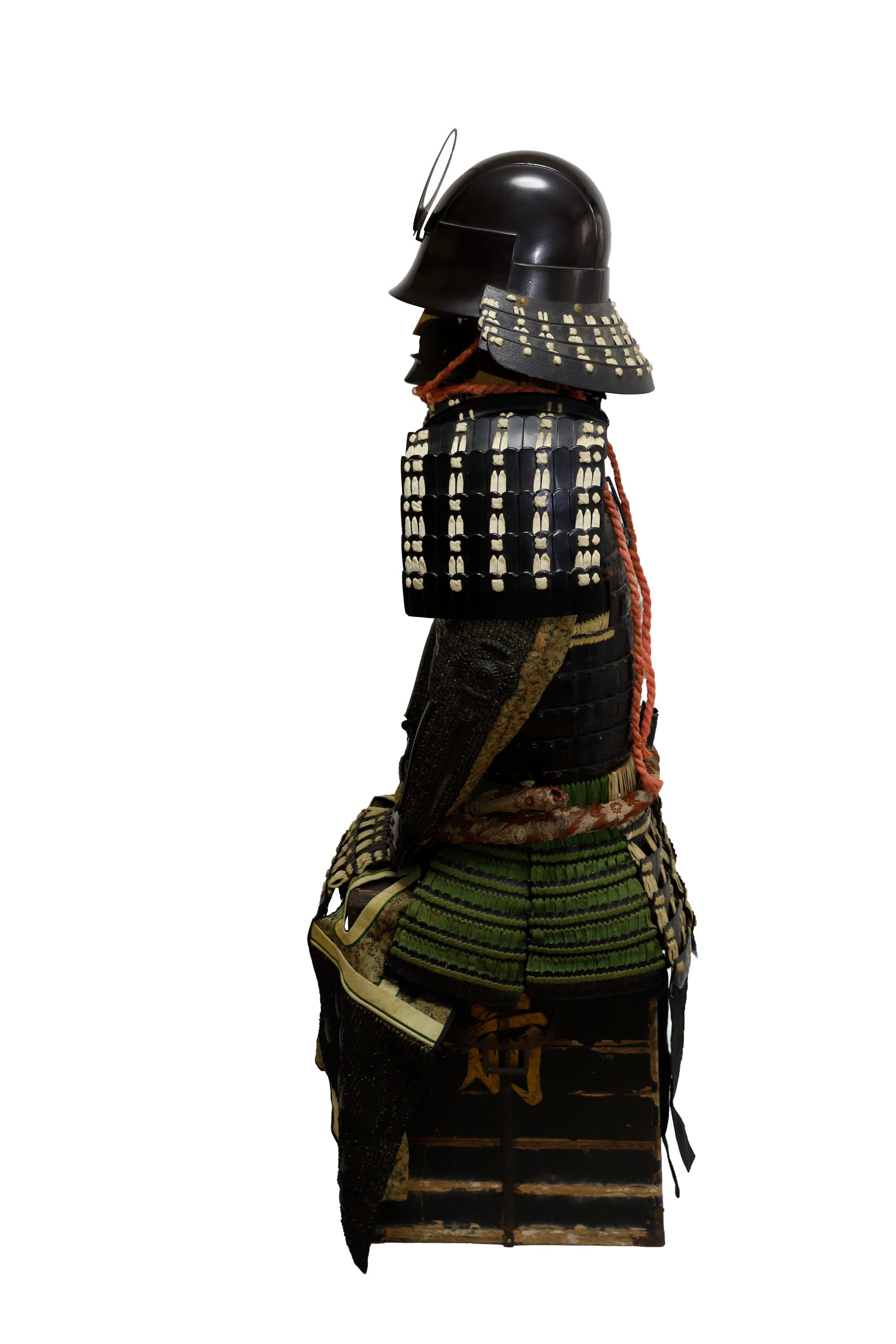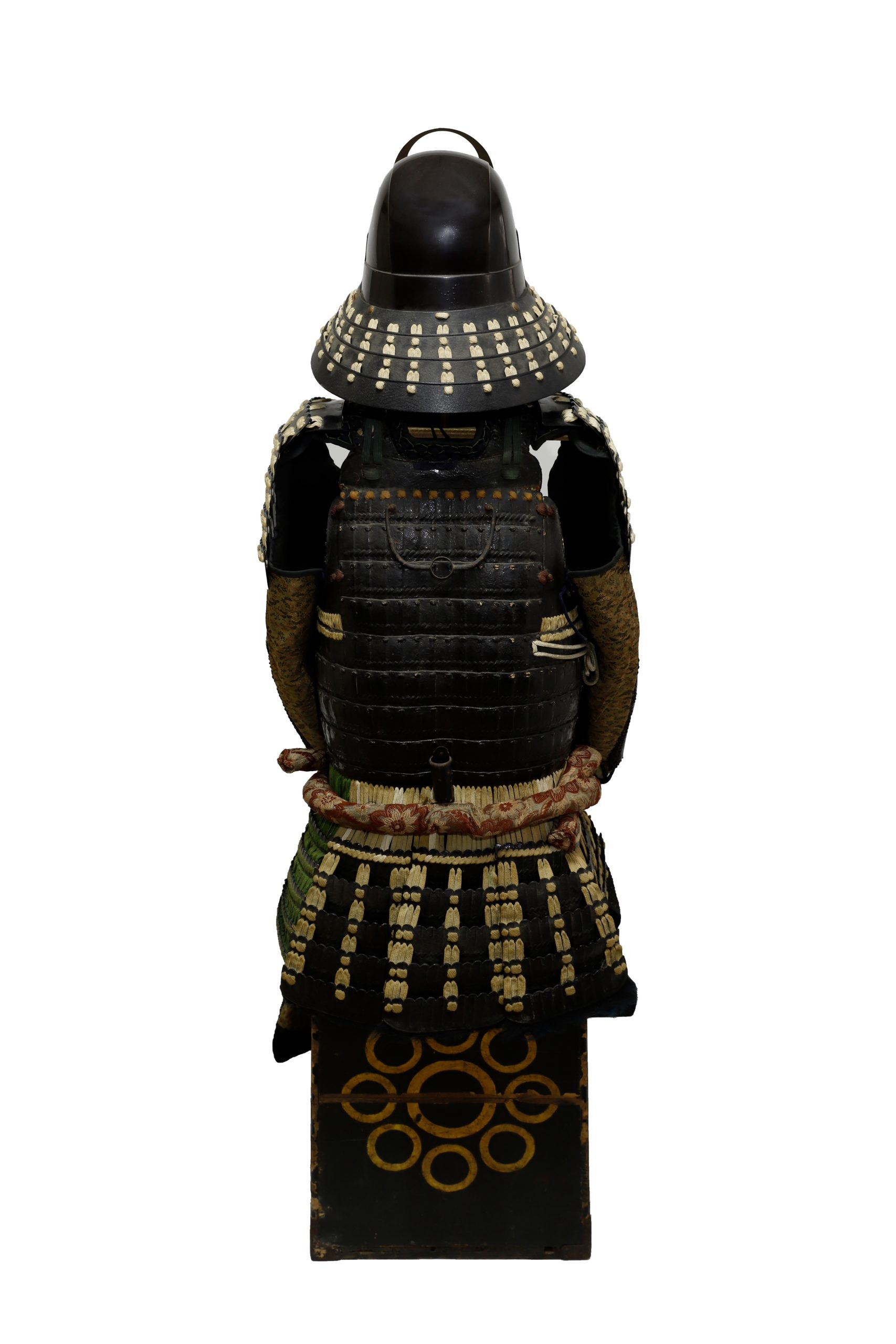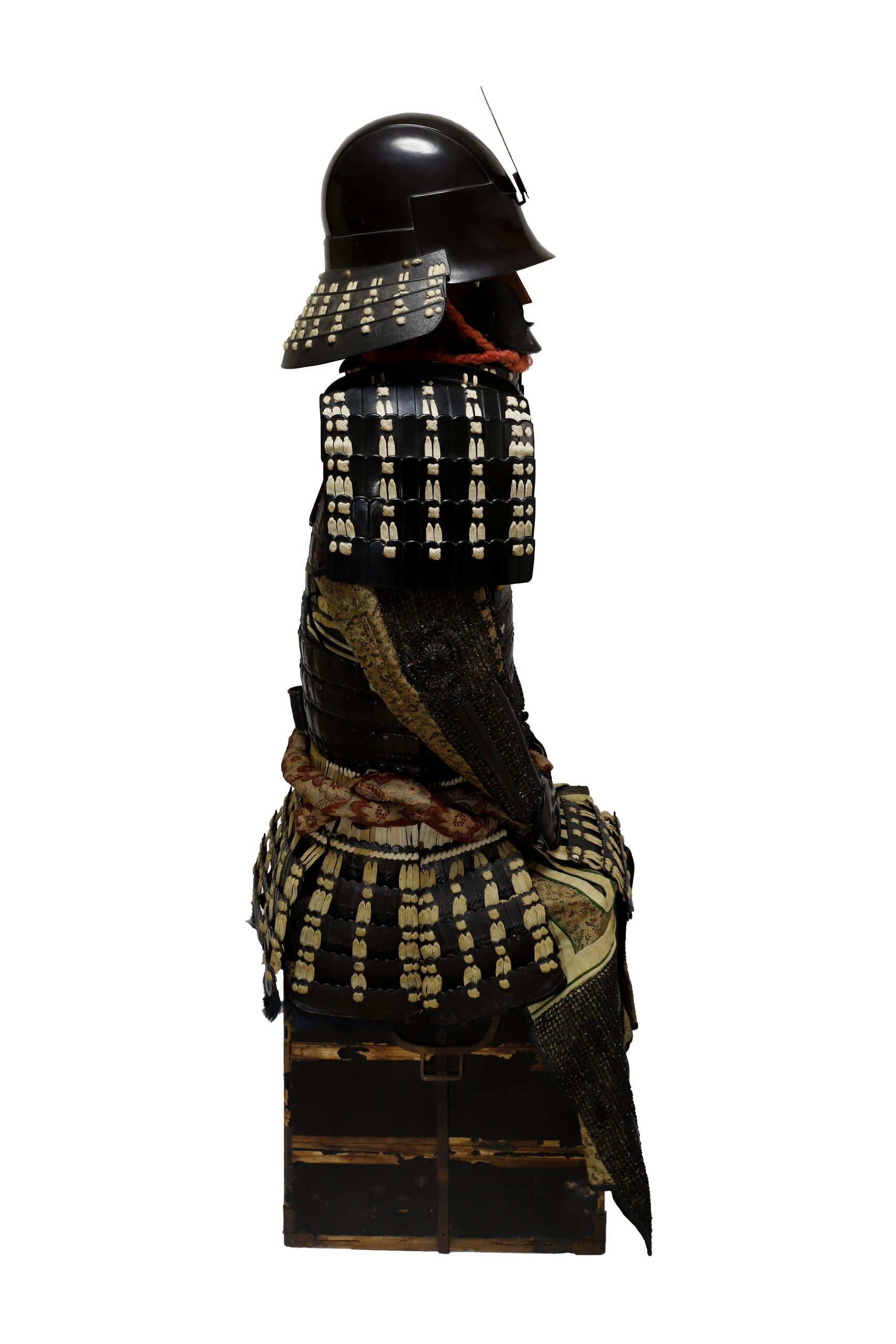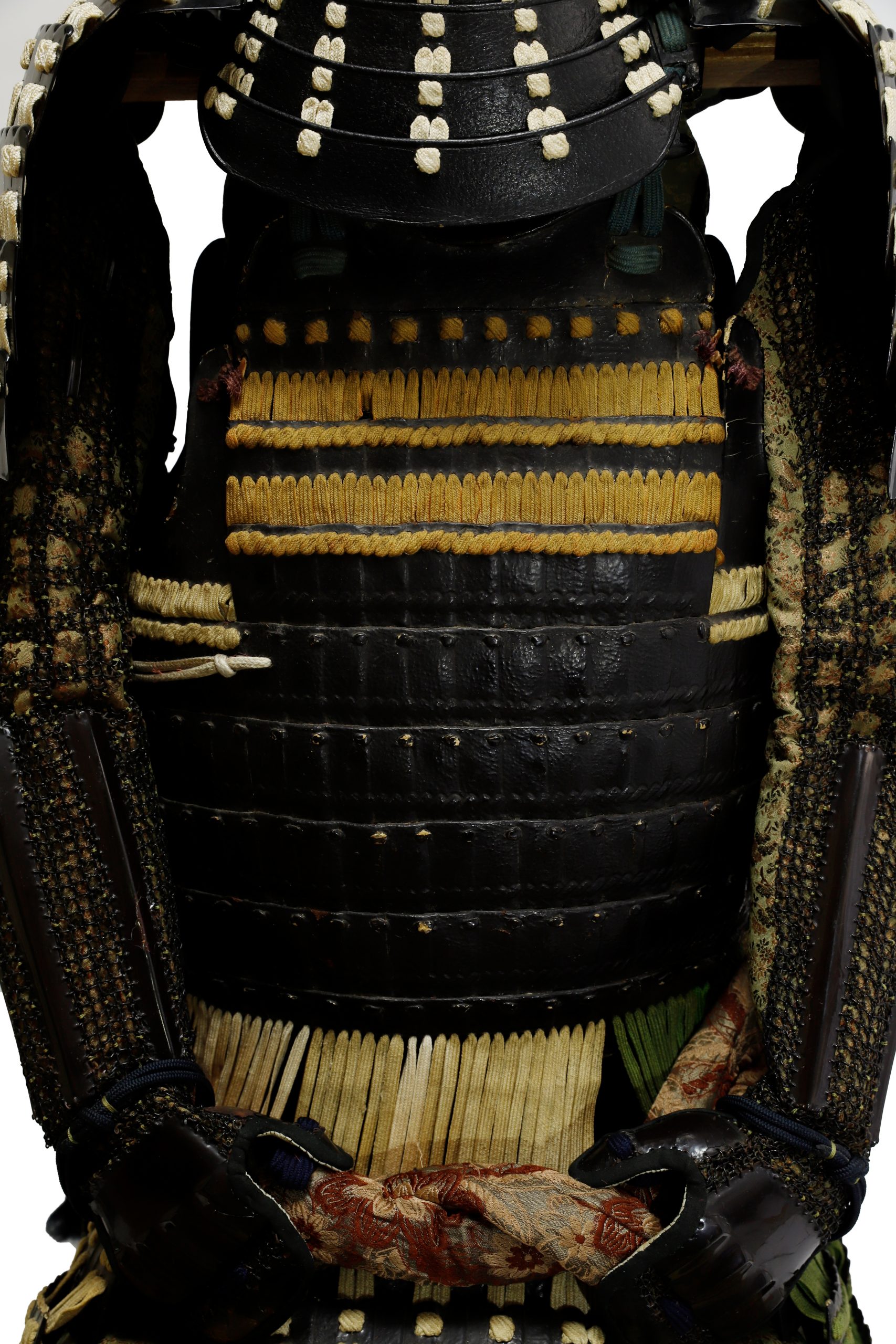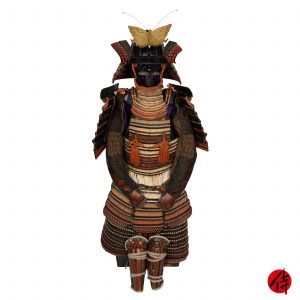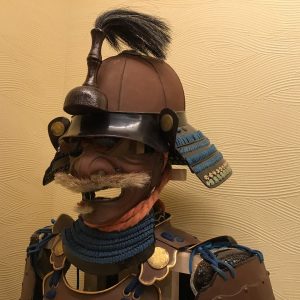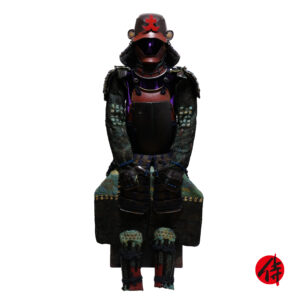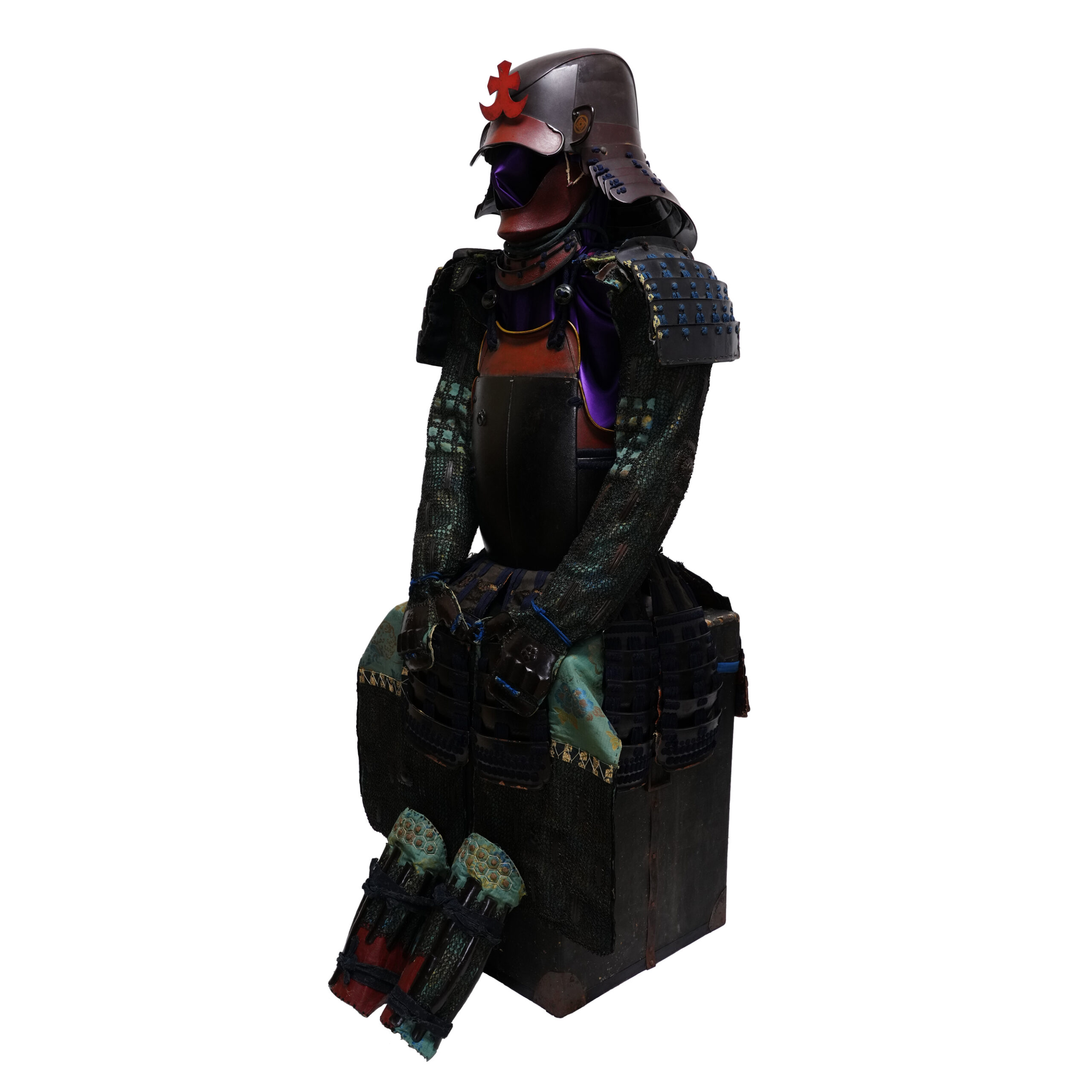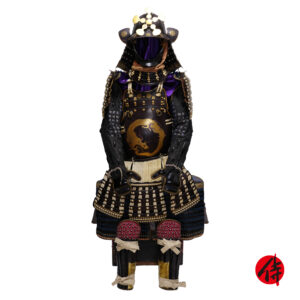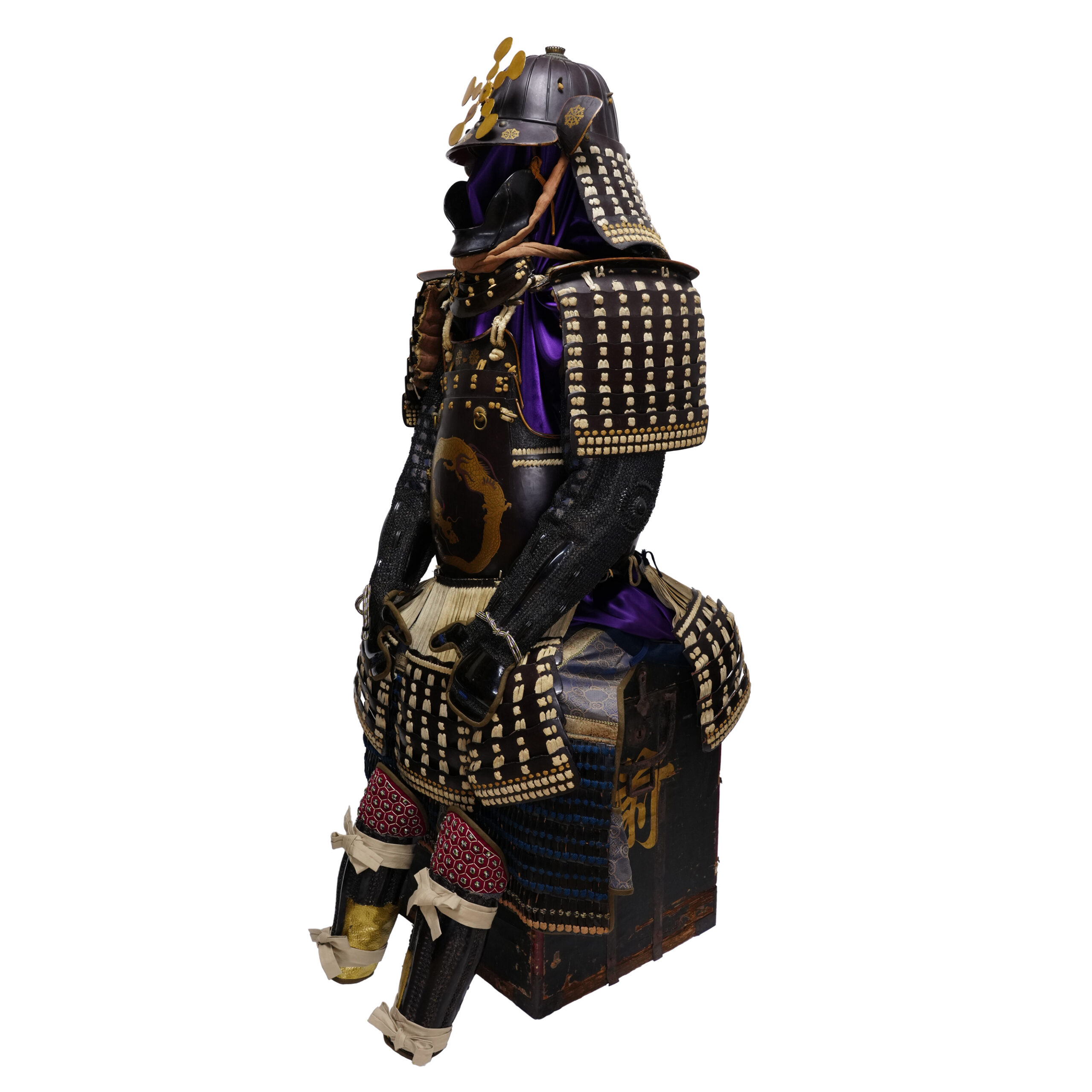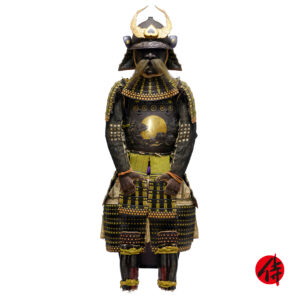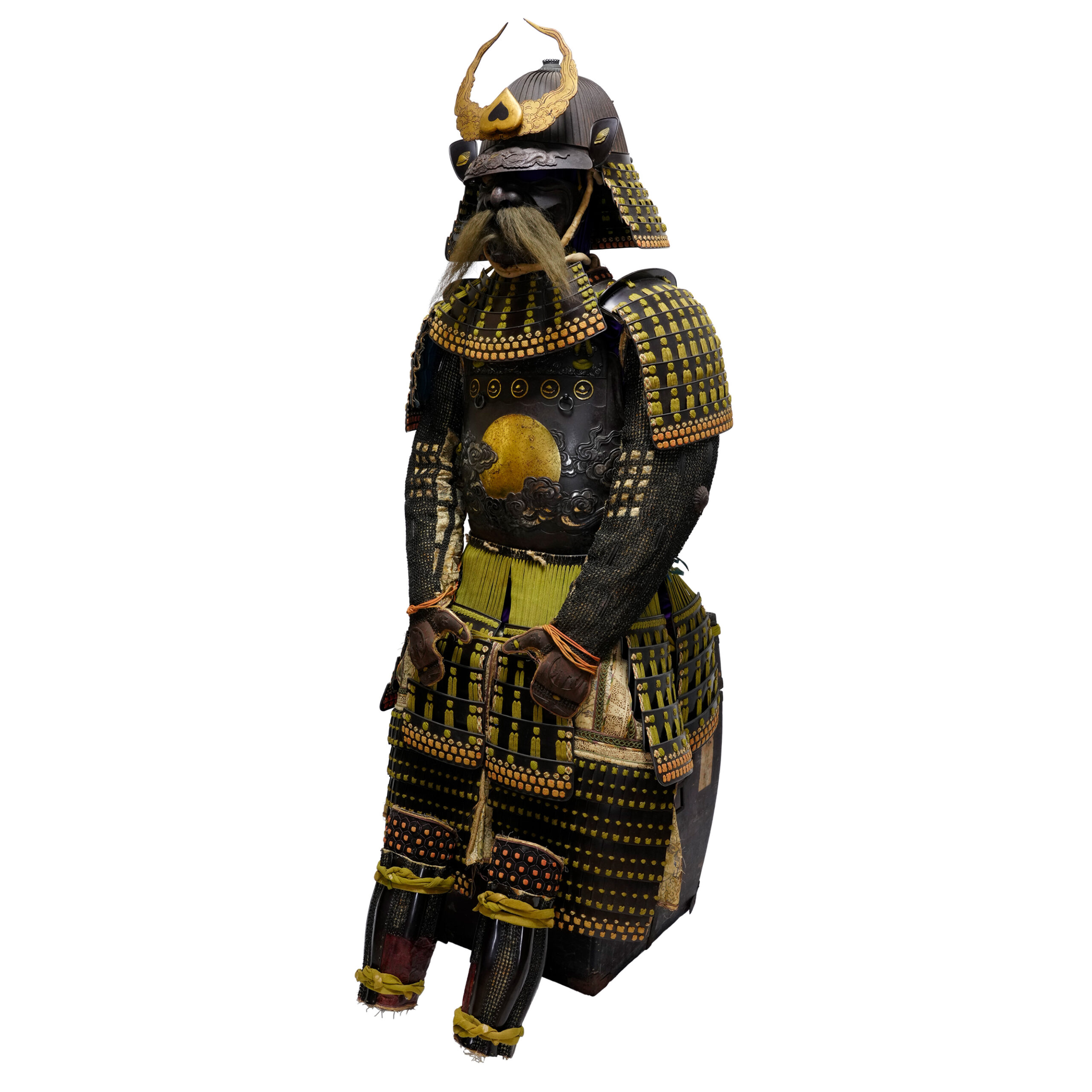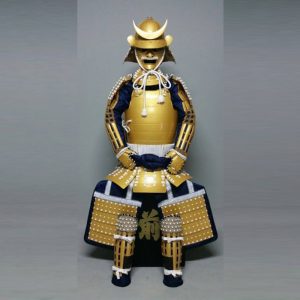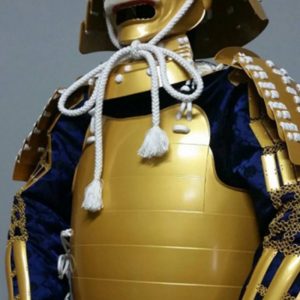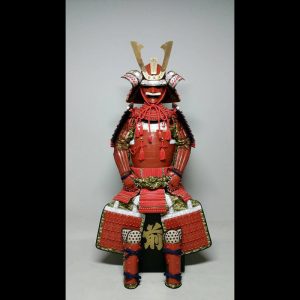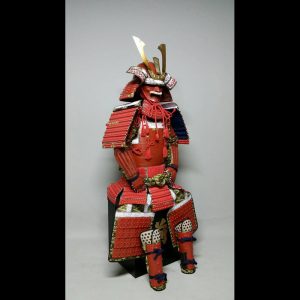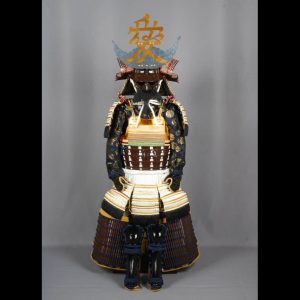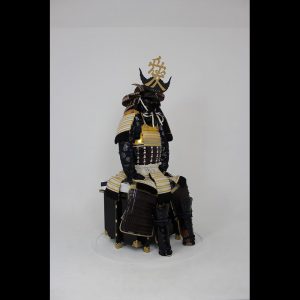Antique Mid Edo Period Black Lacquered Samurai Armor with Tokubetsu Kicho Shiryo Certificate (A-10)
Period: middle of the Edo Period
appraised by The Association for the Research and Preservation of Japanese Helmets and Armor
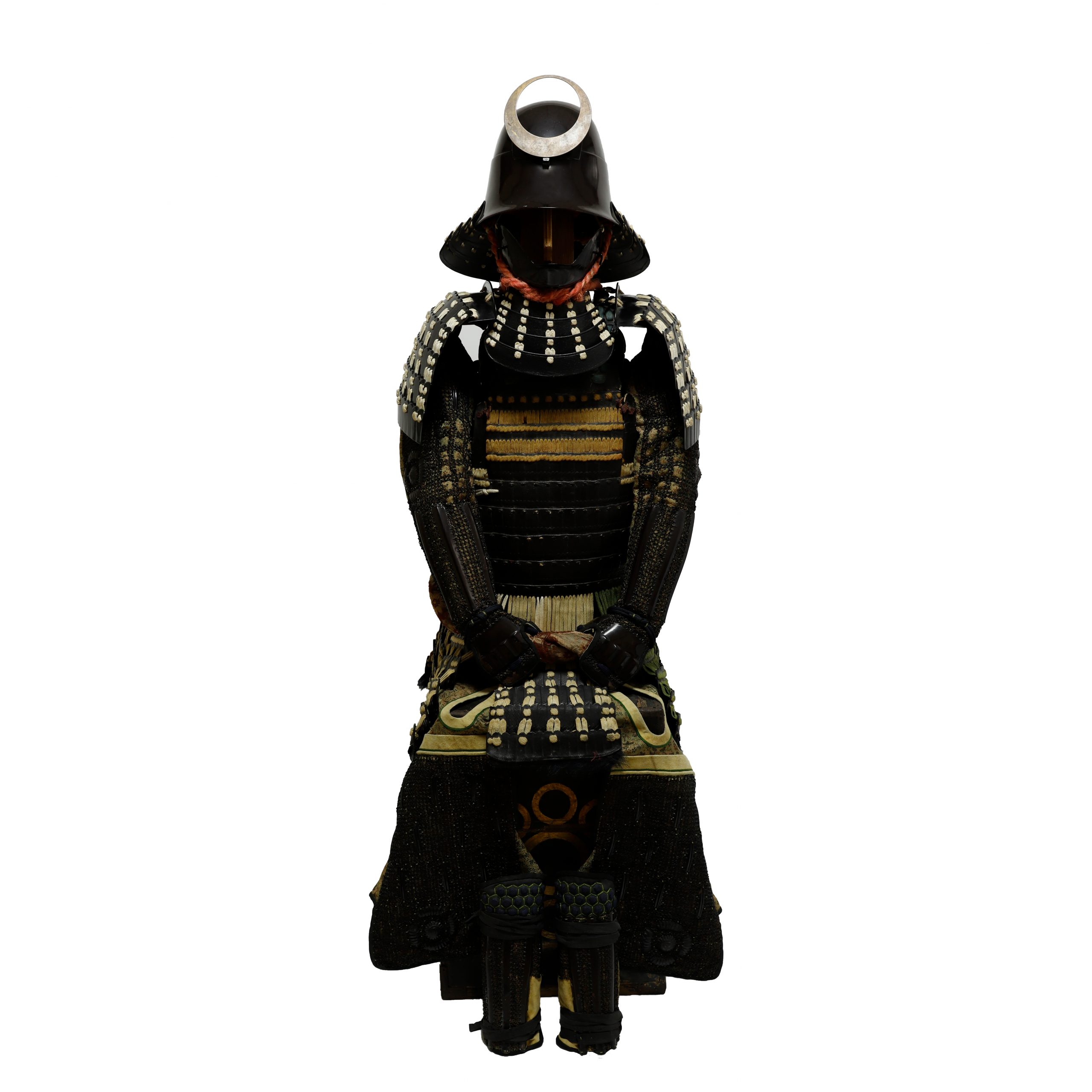
We were told by the previous owner that this armor was once owned by Arima Yoritou (有馬頼永, 1822-1846). He succeeded the head of Arima clan after his father’s death. He controlled the Kurume (久留米, today’s Kurume city in Fukuoka prefecture) domain and implemented various reforms to rebuild the local economy. Unfortunately, he was struck down by disease and passed away when he was only 25 years old. He was regarded highly as a great feudal lord while he could not achieve all of his objectives.
Kabuto (helmet)
■Helmet bowl: Black lacquered Kabuto
The surface is coated with black lacquer.
■Shikoro (side neck guard): Black Lacquered iron half mask.
Iron plates laced with Unohana color (yellowish white)
■Menpo (face guard): Iron mask with mustache made of horse tail hair.
This type of half mask was popular as it was easy to breathe compared to the full mask that covers his nose.
■ Maedate (Front decoration): Nichirin
The motif of this helmet’s Maetate (前立, front decoration) is the Nichirin (日輪, another name for the sun). There was a widespread belief among Samurais; the Myouken (妙見) belief. This religion was born in India. It was mixed with the Polestar belief and was brought to Japan from the Continent. The sun, the moon, and the stars of the entire universe were the symbols of faith. The Myouken Bosatsu (妙見菩薩, 菩薩 means Bodhisattva) fulfills all wishes such as fertility of rich harvest, peace, the prosperity of the clan, healing of illness, longevity, success in business, traffic safety, academic achievement, marriage, etcetera. So, it is understandable that the sun motif was appreciated among Samurais. The former owner of this armor might have had shown his faith wearing this helmet.
Uesugi Kenshin (上杉 謙信, 1530-1578), a famous feudal Daimyo (大名, a Japanese feudal lord), who ruled the Hokuriku (北陸) area also liked this design. He fought in lots of battles and won victory in most of them. Therefore, he was called the Gunshin (軍神, the god of war). His helmet had the front decoration, and its motif was the combination of the Nichirin and the crescent moon. A theory says he believed the Myouken belief and especially worshipped the sun and the moon.
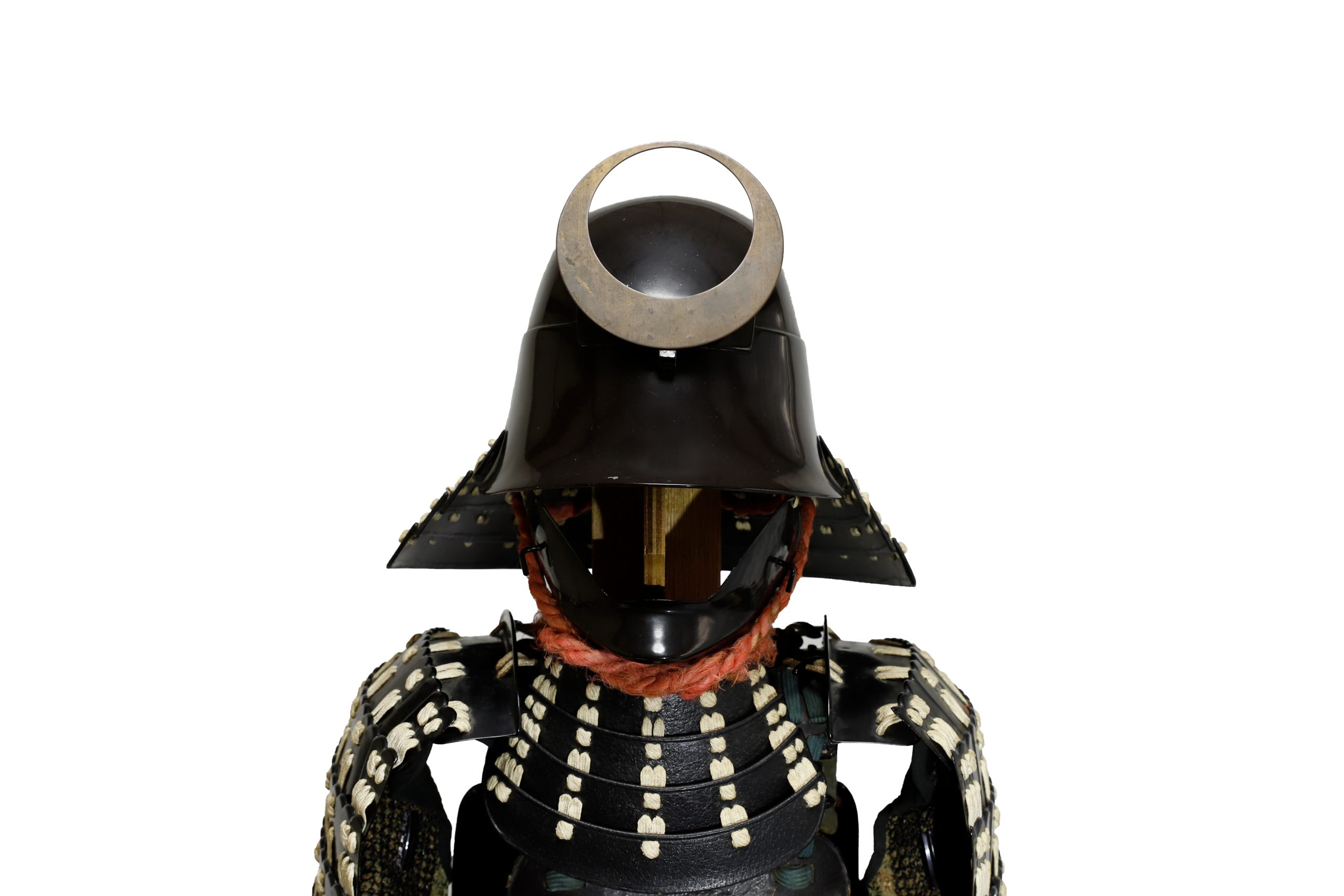
Armor
■Do (cuirass): Okegawa Nimai Do
Nimai Do is a kind of cuirass for Tousei Gusoku (developed armor style). Nimai Do was named after the fact that Nimai means two plates, and Do means torso in Japanese. Instead of using a large number of small lamellar plates called Kozane, this cuirass used large rectangular shaped iron plates riveted.
The name Okegawa came from the fact that the shape of this cuirass resembles the side (Gawa in Japanese) of Oke (Japanese wooden tub). The body armor part can be separated into two pieces and connected with a hinge. Typically, the hinge is located on the left side, and you can tighten this cuirass on the right side.
■ Decoration on body armor:
■Sode (shoulder guards): Tetsusabiji iron Sode laced with navy blue thread.
*According to the authentication paper, Sode was hand-crafted in modern times.
■Kusazuri: lacquered iron Kusazuri laced with navy blue thread
Kusazuri is a skirt of plates attached to the cuirass.
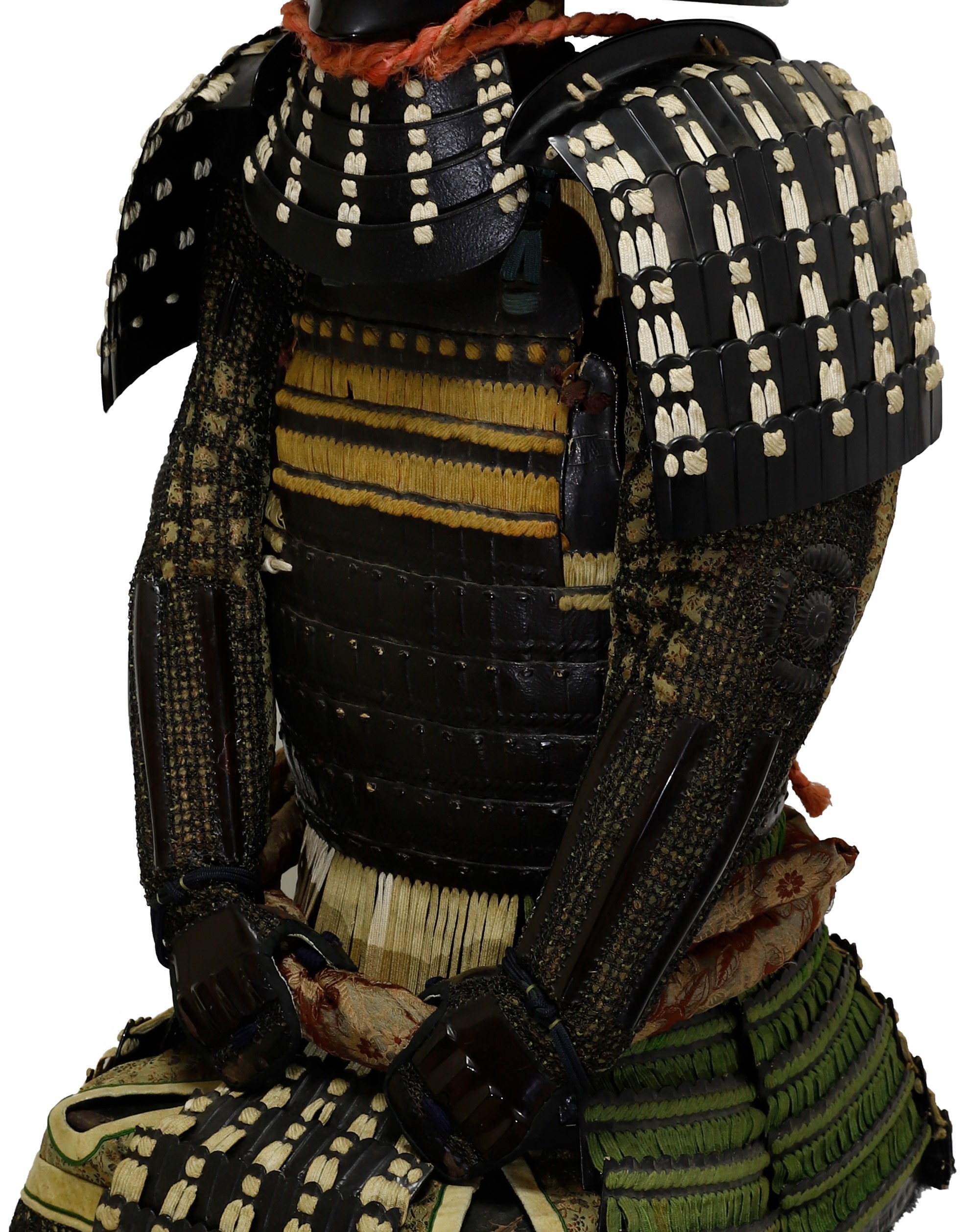
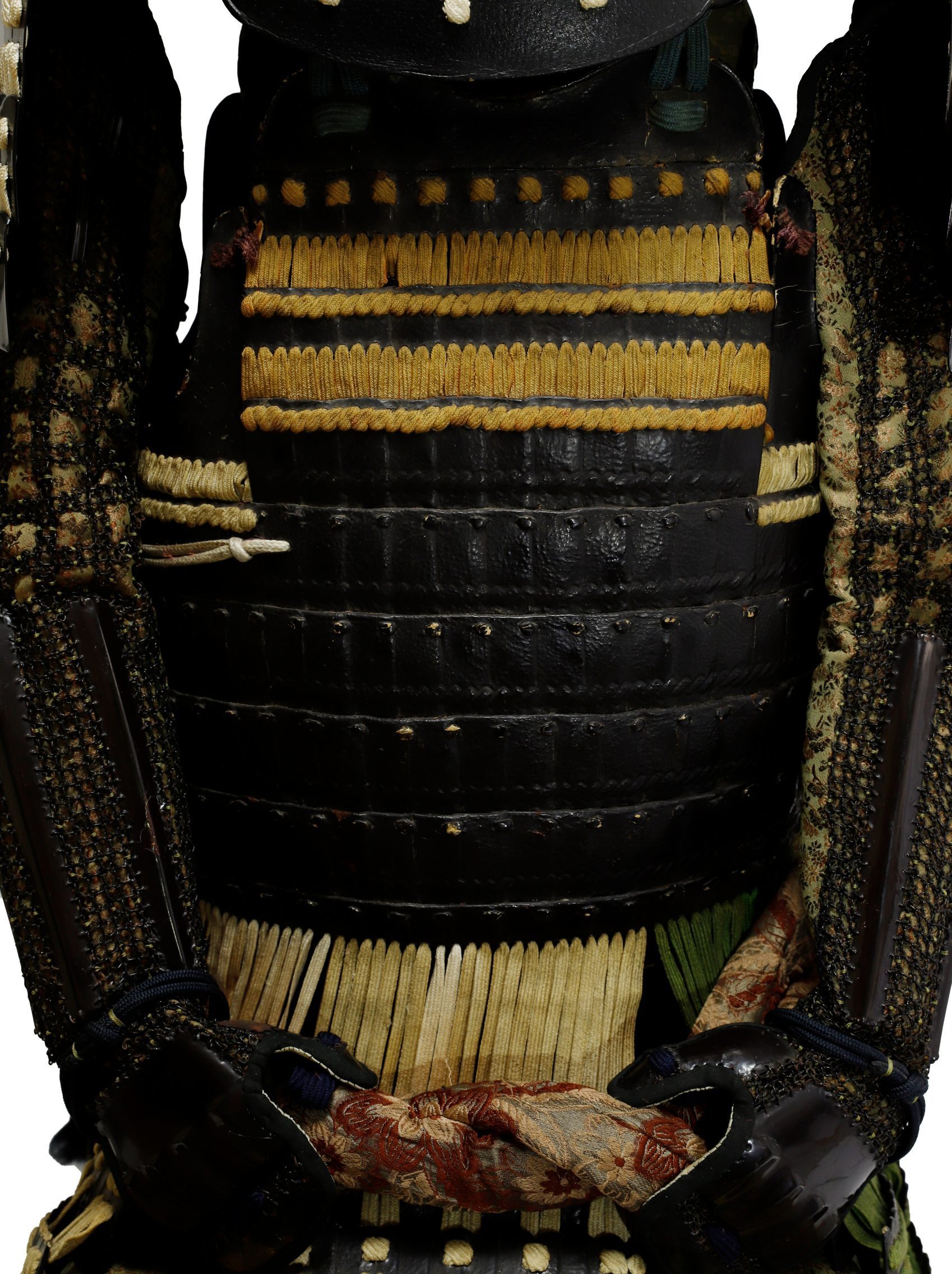
Small parts
■Kote (armored sleeves): Intricate iron chain mail with silk
Several plants decorate the cloth of sleeves. For example, you would find that the pine tree pattern is embroidered in abstracted design. As pine trees keep their green color throughout the years by withstanding severe heat and cold, people thought this plant pattern represents eternal youth. Furthermore, its color is called the Tokiwa-Iro (常盤色, evergreen trees’ dark green color with brown), and pine trees have another name “Tokiwa-Gi (常盤木).” Tokiwa means immutability. So, the Tokiwa-Iro is a color that praises green with a wish for longevity and prosperity. We imagine that Japanese people (including Samurais) favored this color at that time.
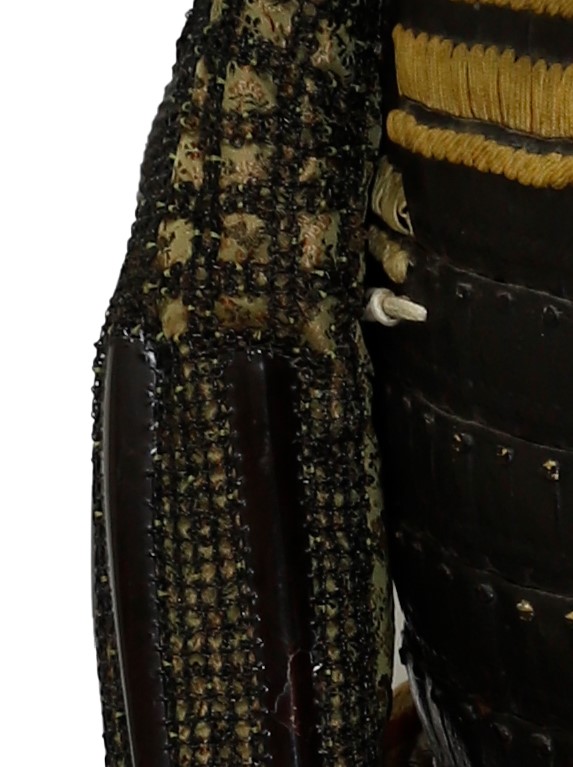
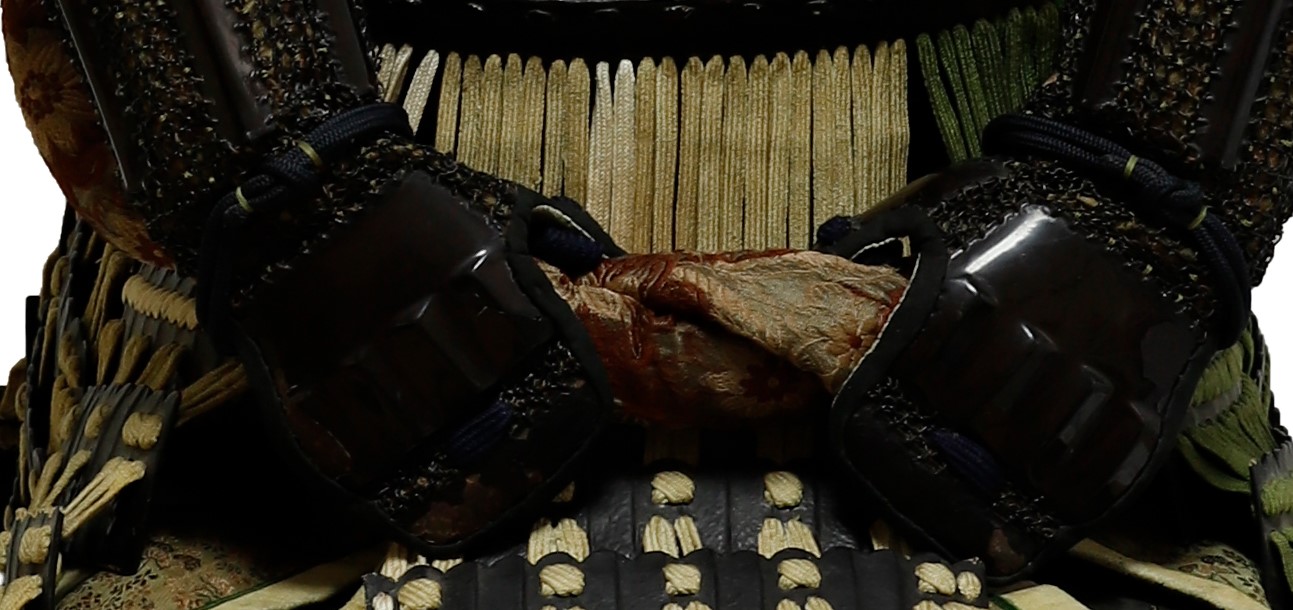
■Haidate (thigh protection): Haidate is a thigh guard.
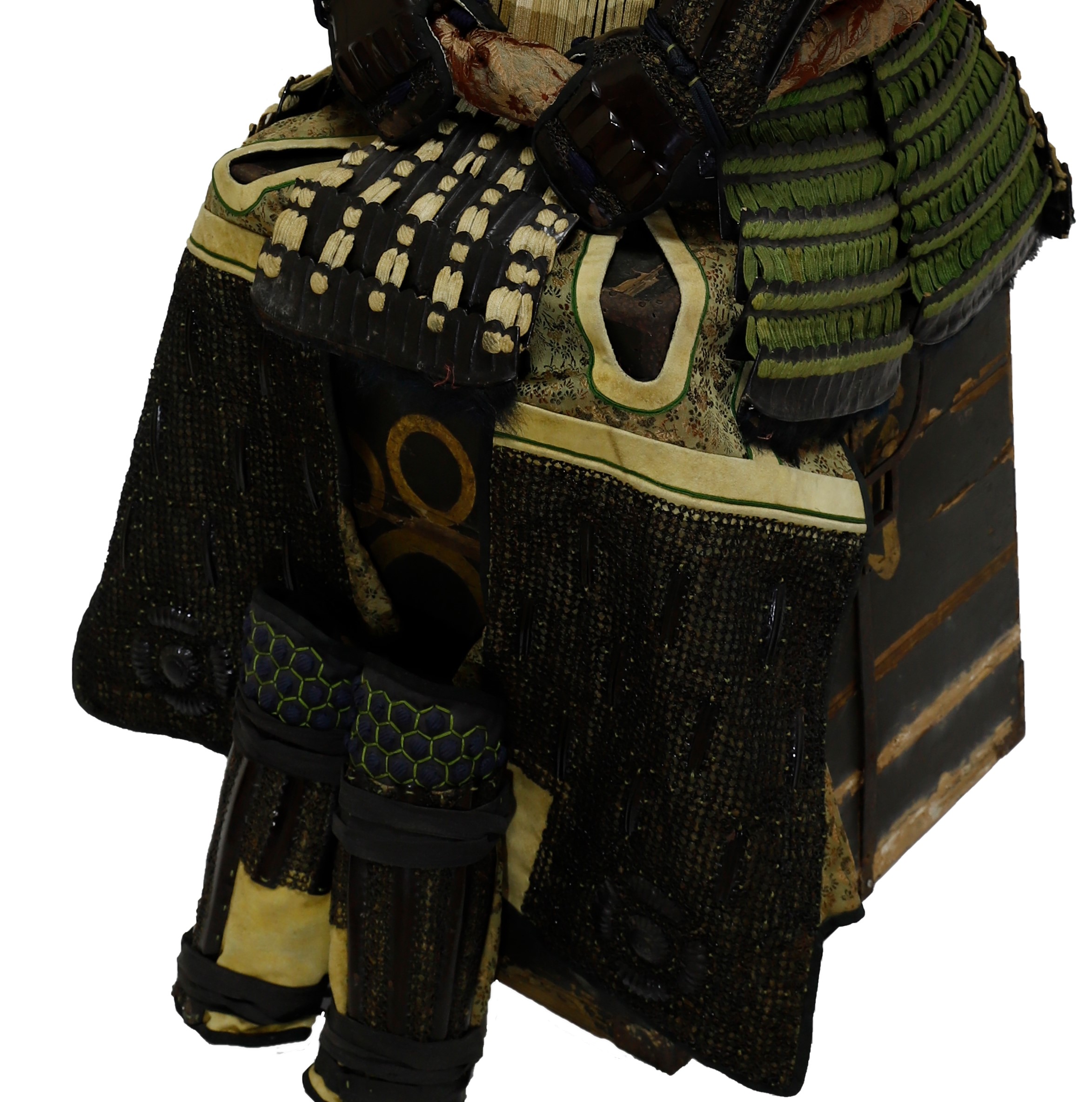
■Suneate (shin guard): lacquered iron Suneate
The Kikkou (亀甲, turtle’s shell) pattern is used for the cloth of leg guard. It is a continuous geometric pattern connecting regular hexagons up and down. A theory says that this design was brought from China and the Korean Peninsula in the Asuka (592-710), Nara period (710-794). A proverb says turtles live a long life; therefore, turtle and turtle’s shell pattern represent longevity. In addition, as this continuous hexagonal pattern does not get out of its shape, it is said people wished for eternal prosperity by using this design.
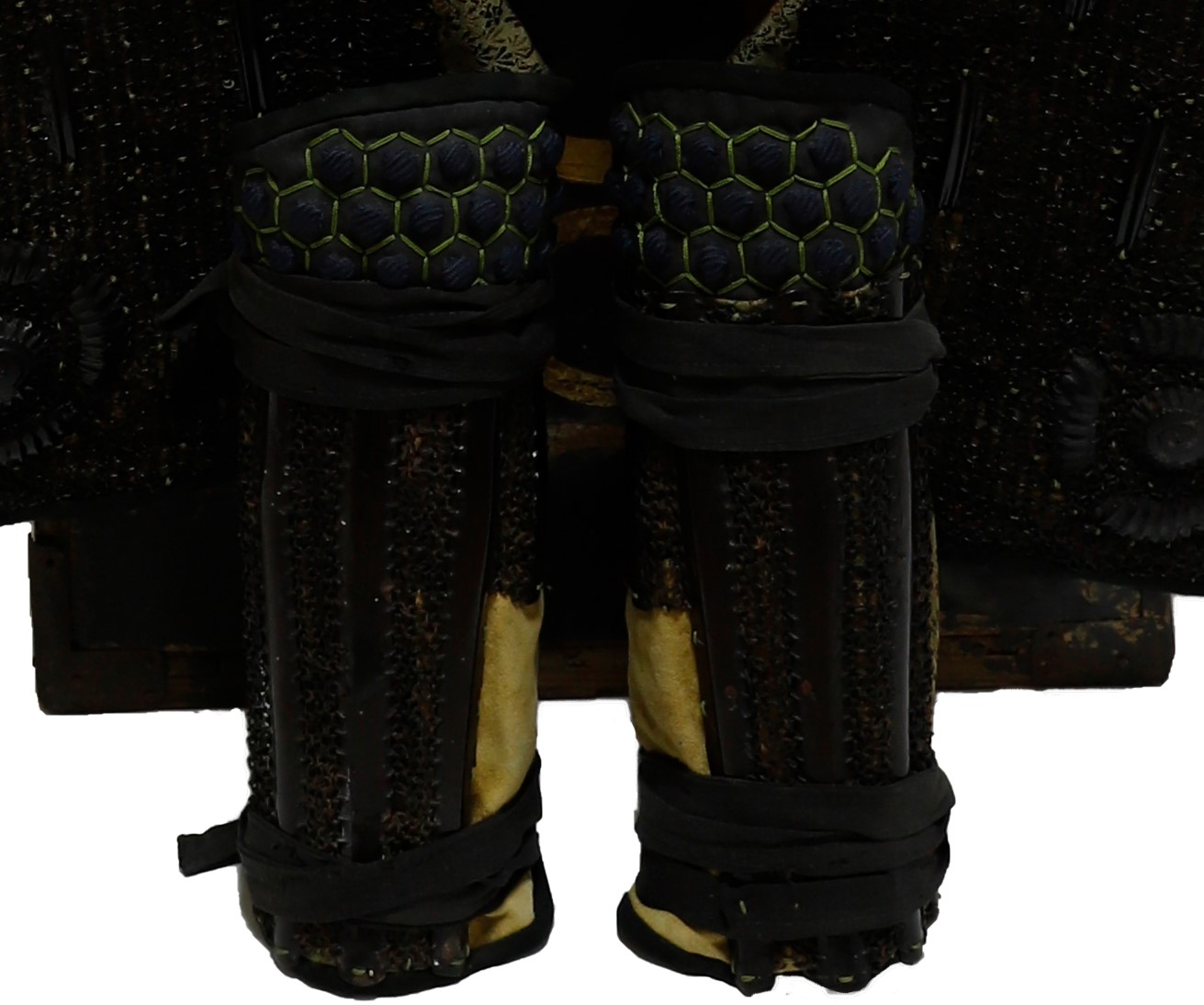
■Nadokoro (ring, tube): Flag holder
If you focus on the back of this armor, you will find that a ring-shaped part and a tube-shaped holder are attached. These are the gears to put flags into it. Samurais judged their side and enemies on the battlefields by checking the motifs that were designed for flags. Especially in group battles with infantry, this method was very effective because they could instantly identify affiliations.
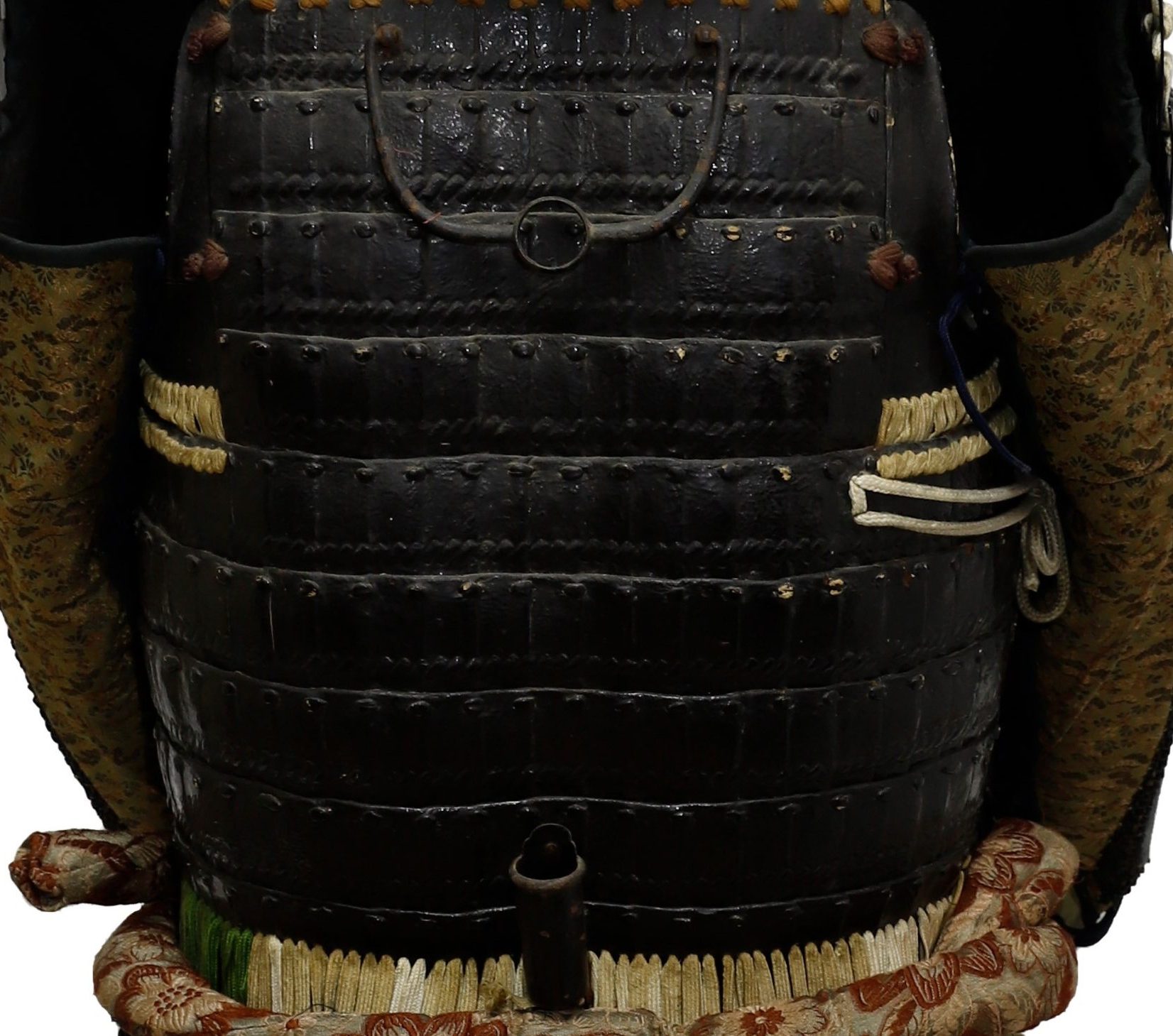
■Kacchu-Hitsu (armor box): wooden armor box
The combination of nine circles is painted on this armor’s box. It is a kind of family crest called the Hoshi (星, star) pattern or the Kuyou (九曜) pattern. As its name implies, each circle represents a star. Stars have been worshipped as a holy existence that controls fate. Since each star moves in a fixed orbit, people could know the position during hunting or voyage or know the agriculture season. That is, stars have a deep relationship with people’s daily life. With time, stars came to be treated as a design, and some people arranged it for their family crests. The Kuyou pattern is one of them.
There are various types of Hoshi Mon, such as three stars, seven stars, and nine stars as this work. Three stars design is called the Mitsu-Boshi (三つ星) in Japanese, and it means the Kachi-Boshi (勝ち星, winning star). For warriors who lived on the battlefields, it is understandable that many Samurais loved such an auspicious motif. For example, Date Masamune (1567-1636), one of the famous warlords, used Kuyou Mon for one of his family crests.
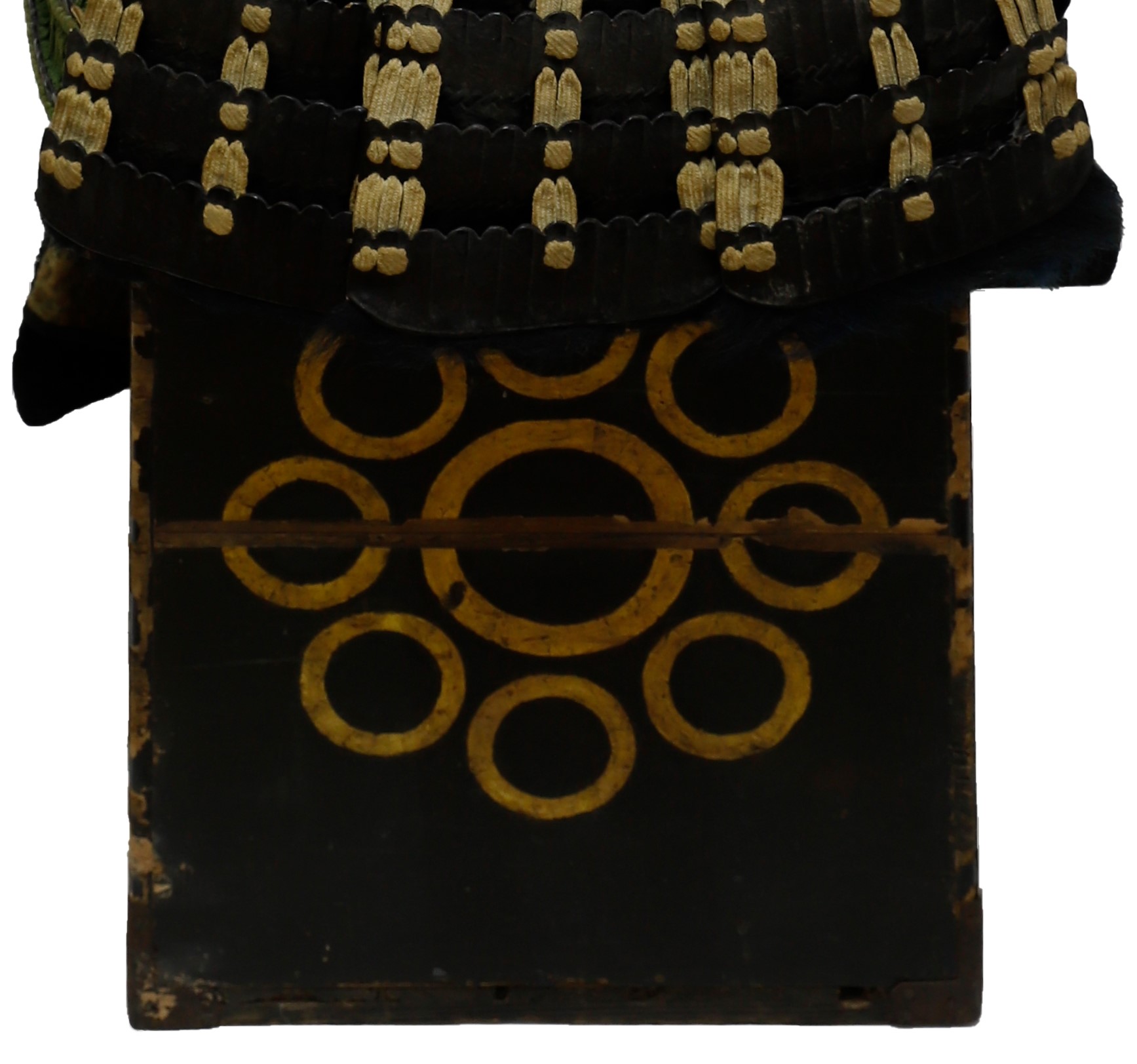
Certification: Tokubetsu Kicho Shiryo Certificate (No. 1922)
The certificate will be issued by The Association for the Research and Preservation of Japanese Helmets and Armor, which is the most trusted Japanese armor appraiser in Japan. Tokubetsu Kicho Shiryo means an especially precious cultural article. It is ranked as the third highest of five rankings.
This armor was authenticated on October 10th 2021 as Tokubetsu Kicho Shiryo and the paper will mention the armor was made in the mid Edo period. The certificate also mentions that Sode (shoulder protection) was made in modern times.
An English translation of the certificate is available on request. We won’t charge any additional fee.
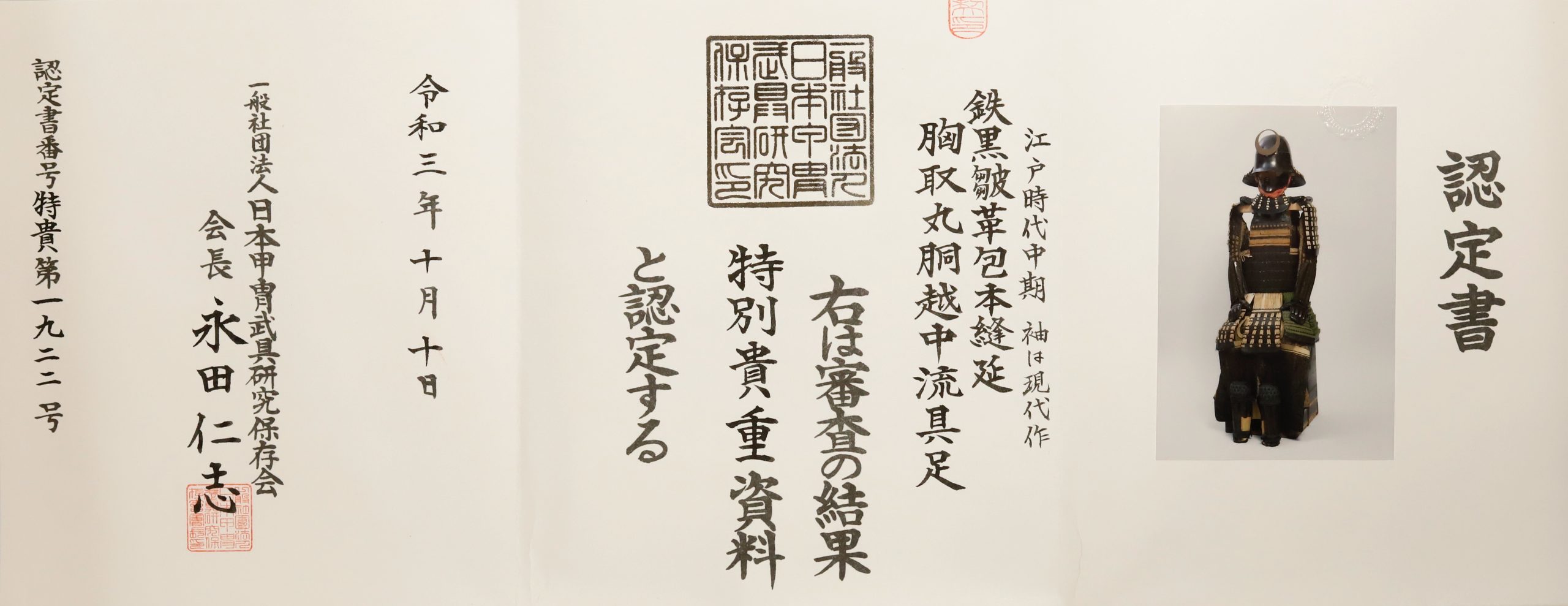
【About us】
Samurai Museum is located in Tokyo, Japan, exhibiting antique artifacts related to the Samurai history. Samurai Museum Shop is the place for those who are interested in Japanese culture and craftsmanship. We deal with antique Samurai swords/armor, original Japanese sword mounting, traditional crafts made in Japan and so on.
【Antique Japanese Armor and Export process】
After receiving the full payment from you, we will apply for its export permit from the agency for Cultural Affairs to legally export the antique Samurai armor to other countries. It normally takes around 2-4 weeks to receive this permit. And we would like you to expect at least 1-1.5 months for your order to arrive at your given address after you ordered.
【Payment Method】
We accept payment through Stripe (Credit card), PayPal, Apple Pay or ChromePay, all of which are secure payment methods. If you prefer other payment method, please contact us. After confirming your payment, we will apply for an export permit. You may either pay in JPY, USD, AUD, CAD, EUR, CHF or GBP. The price is set in Japanese Yen. Prices in other currencies are automatically calculated based on the latest exchange rate.
*If the amount is above 1 million JPY, Stripe or wire transfer will be the only options for payment.

【Shipping】
We normally ship via EMS (Express Mail Service) provided by Japan Post. It usually takes at least 5-14 days to deliver the package after you place an order. We offer Free International Shipping as long as we can ship your order by EMS. If you prefer other shipping carriers, please contact us.
We will inform you of the order’s tracking number via email. Please make sure you fill out your valid email address correctly.
*Please keep in mind that due to the spread of COVID-19, there might be delays in shipping. If you like to know the detail about shipping, please feel free to ask us.

【How to make sure the condition】
Please keep in mind that what you are going to purchase is an antique item. We uploaded high resolution photos for you to check its condition thoroughly. If you like to see more photos with different angles, please feel free to contact us. We will be happy to send them to you so that you can make informed decision. It is essential for us to know that you are happy with your choice of a sword. and we are prepared to use the best of our ability to serve you.
【How To Contact Us】
Please contact us through email, Facebook Messenger or Live Chat if you have any questions. You can find each icon on the right side of the website. Please click one of them to reach us. We will reply to you within 1-2 business days.
【How To Preserve Antique Samurai Armor】
Dryness, humidity, and bad ventilation might deteriorate the condition of antique Samurai armor. The best temperature to preserve Samurai armor is around 20℃ in Celsius, and humidity should be about 60%. Direct sunlight should be avoided. We recommend storing armors in a room with good ventilation. If you like to display them outside the boxes for a prolonged time, we suggest using a glass case in order for dust not to be accumulated easily. In case you don’t use a glass case, please make sure to regularly dust off from the armor by using a soft brush made of delicate cloth or brush for painting.
If you like to know more about the preservation of this armor, please feel free to contact us.

